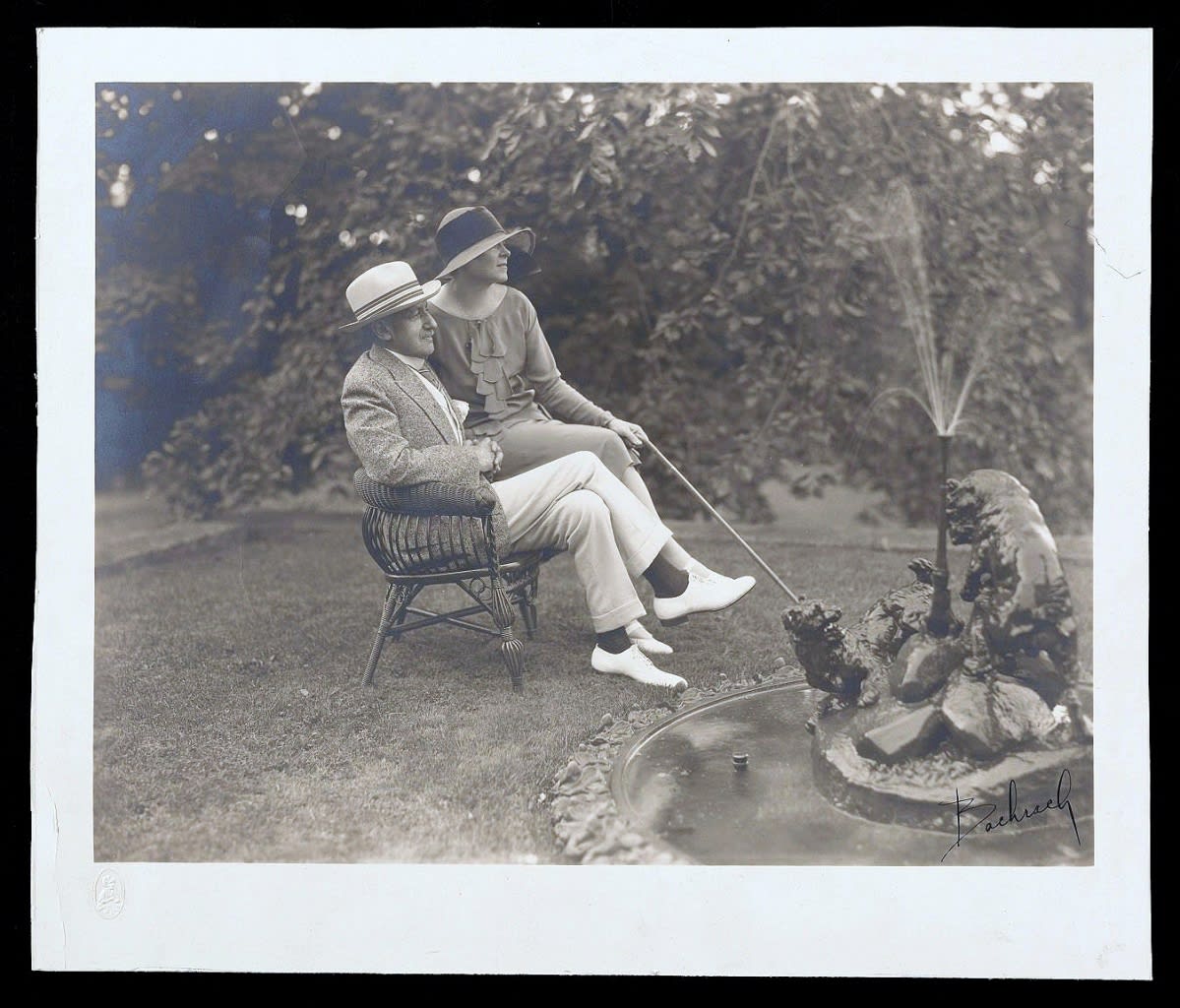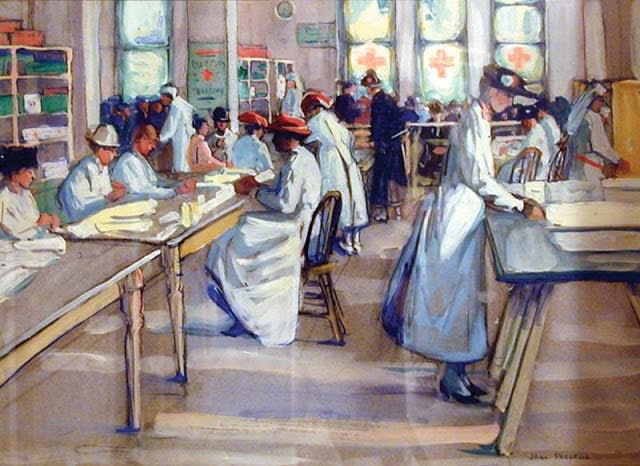If a movie was made today of the life of Jane Peterson, it would probably star Julia Roberts (who is 52, around the age that Jane Peterson married for the first time and settled down to a life of domesticity for four or five years) and a cast of international actors to play her teachers, patrons and friends.
The film would be billed as, “small town girl becomes successful artist, travels the world and finally settles down with millionaire husband.” But that would be just skimming the surface of the life of one of America’s most talented, courageous and prolific painters of the twentieth century.
Peterson was born in 1876, in Elgin, Illinois, the Butter Capitol of the World until the Elgin watch company came along. Peterson’s father was a jeweler who worked for the company, her mother was a homemaker. Peterson was the second of four children, a talented artist who was determined to pursue a career in art, despite her father not wanting to invest in what seemed, at that time, an improbable career for a woman.
At an 1893 Expo in Chicago, Peterson serendipitously learned about Pratt Institute in Brooklyn, New York, a fairly new school at the time. She applied to Pratt, passed an aptitude test, borrowed three hundred dollars from her mother and headed for New York.
She graduated from Pratt, found a job as a drawing supervisor in the Brooklyn public schools and continued her education at the Art Students League, where she later taught watercolor. At Pratt she met Alexander M. Hudnut, who became her patron and benefactor and paid for many of the trips she took to Europe to continue to study and paint.
In 1909, Peterson was introduce to Spanish Impressionist, Joaquìn Sorolla y Bastida. She studied with him in Madrid for six months, and her work took on a more colorful and vibrant feel than it had before. Sorolla also encouraged her to paint or sketch ten or more pieces a day. Peterson traveled extensively and had also managed to have at least one solo exhibition every year through the 1950s, when she was seventy years old.
At the age of fifty, Peterson married wealthy corporate lawyer, M. Bernard Philipp, who was more than twenty years older. The couple lived in a Fifth Avenue penthouse and summered at their country estate in Ipswich, Massachusetts. Peterson lived a domestic lifestyle with Philipp, painting flowers, gardens and boats along the Massachusetts coast. The marriage lasted until Phillips death a few years later, and Peterson resumed her travels.
Jane Peterson’s works can be found in the collections of the Metropolitan Museum of Art in New York, the Hirshhorn Museum and Sculpture Garden in Washington, D.C. the San Diego Museum of Art, the Brooklyn Museum, and many other venues around the world.
The Works of Jane Peterson at Surovek Gallery
Please contact us if you would like more information about Three Boats in Venice, Sailboat in Gloucester Harbor or any of the other fine work available in Surovek Gallery.
References:
John Muldoon. Is there a Peterson in the house? It could be worth $250,000. Ipswich Local News. March 10, 2020.
Arlene Katz Nichols. Jane Peterson: At Home and Abroad opens at the Long Island Museum. TBR Newsmedia. February 22. 2018.
Grace Glueck. ART IN REVIEW; ‘Jane Peterson: Around and About, 1910-1930’.
The New York Times. September 14, 2001.
The New York Times. Miss Jane Peterson, Artist, the Bride of M. Bernard Philipp, Retired Lawyer. March 20, 1925.
Jules Heller, Nancy Heller. North American Women Artists of the Twentieth Century: A Biographical Dictionary. Routledge. December 19, 2013.





